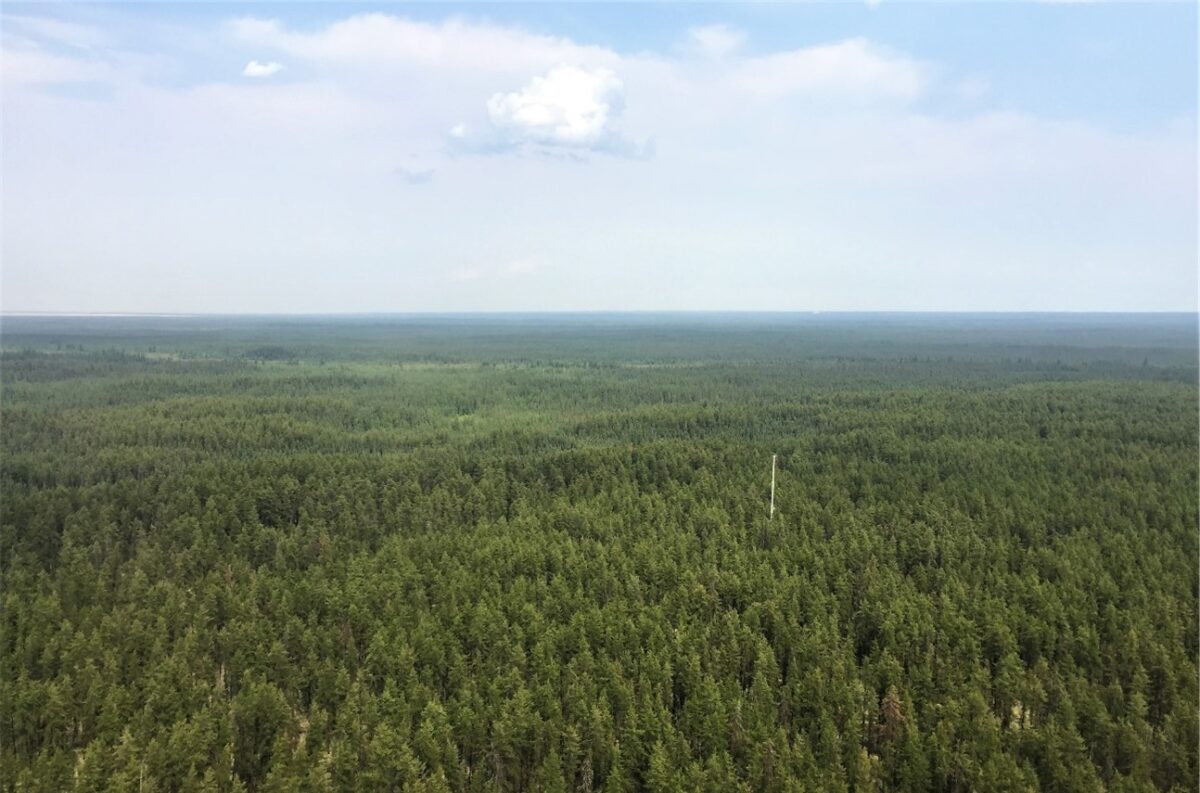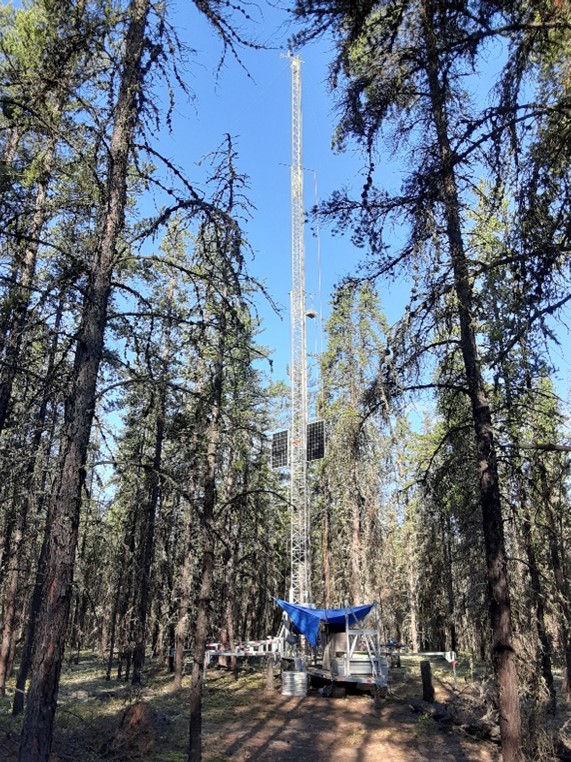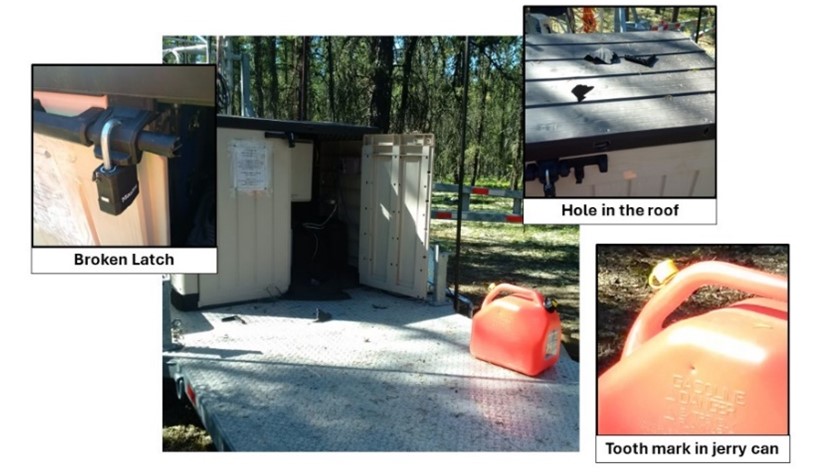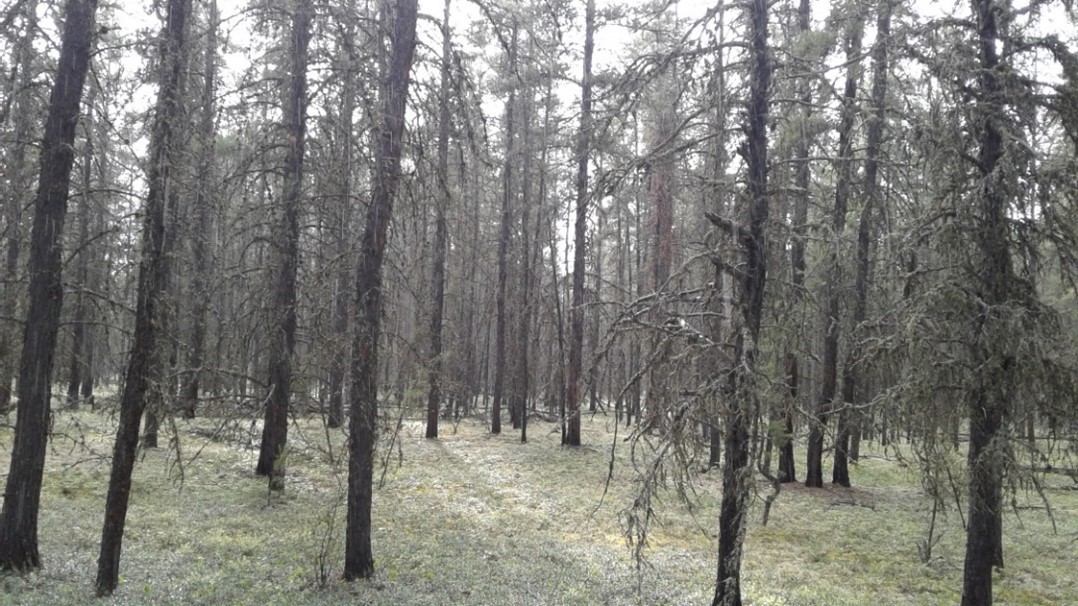Five years of forest fieldwork helps advance air quality model research
Tags:

Air quality models serve as a crucial tool, helping people understand potentially harmful atmospheric conditions and adopt appropriate safety measures. For example, in the summer of 2023, Toronto was briefly covered in a thick blanket of smoke due to pollution from wildfires – causing the bustling city to have some of the worst air quality in the world. At this time, air quality models helped keep the public informed and aided authorities in assessing potential risks.
“Air quality models work in the same way weather models do,” says Mark Gordon, associate professor in the Earth & Space Science & Engineering Department at York University’s Lassonde School of Engineering. “Just like a weather model can tell you when it is going to rain, these models allow us to understand air quality and inform necessary action.”
Professor Gordon’s work focuses on developing air quality models and improving their accuracy to reflect real atmospheric conditions as closely as possible. To achieve this, physical and chemical properties and processes of various pollutants in the atmosphere are measured and analyzed. Mathematical and numerical techniques are used to simulate the collected data and create or improve air quality models.
“Getting air quality models right is crucial,” says Professor Gordon. “Accurate models can help predict many things, like how pollutants from a newly implemented industrial site might impact nearby communities.”
Beyond this, air quality models are used to help control air pollution and monitor the impact of pollutants on natural ecosystems like grasslands and forests.
In a recently concluded project funded by Environment and Climate Change Canada, Professor Gordon and his graduate students measured pollutant emissions from the Athabasca Oil Sands Region (AOSR) in Northern Alberta to examine how pollutants interact with the nearby Boreal forest. Measurements were also compared with values used in existing air quality models to validate their accuracy.
Aerosols, sulfur dioxide and ozone were the three pollutants of interest due to their harmful impact on climate, vegetation and natural ecosystems.


Left: View of the 100 ft tall, instrumented tower in the Boreal forest of Northern Alberta. Right: Kaiti (Timothy) Jiang (MSc 2018), Xuanyi Zhang (MSc 2020) and Professor Gordon standing in front of the tower.
In 2017, a 100 ft retractable tower, the York Athabasca Jack Pine (YAJP) tower, was deployed in the Boreal forest and equipped with analyzing and sensing tools to measure the concentration of the pollutants. Various methods were used to examine the activity of each pollutant as well as different physical and chemical properties.
The research team was primarily focused on investigating deposition rates of the pollutants. This property reveals how fast the surrounding forest takes the pollutants out of the air.
After five years of fieldwork in a remote forest, countless hours of research, and a few encounters with bears, Professor Gordon and his research team published three unique papers, each focused on one of the distinct pollutants: aerosols, sulfur dioxide and ozone. This work would not have been possible without the dedicated efforts of Professor Gordon’s graduate students, Kaiti (Timothy) Jiang, Xuanyi Zhang, and Dane Blanchard, who helped lead many aspects of these studies.

The trilogy of investigations resulted in valuable insights which can help improve the accuracy of existing air quality models and support further studies.
“Algorithms used for air quality models are shared,” says Professor Gordon. “So, improving one model can help improve many others.”
When pollutant measurements from the studies were compared with values used in existing air quality models, it was revealed that the deposition of sulfur dioxide to the forest was much higher than expected while ozone was lower, and aerosol deposition was right on target. Using this information, inaccuracies of current air quality models can be corrected to reflect real-world conditions and establish more precise models.
